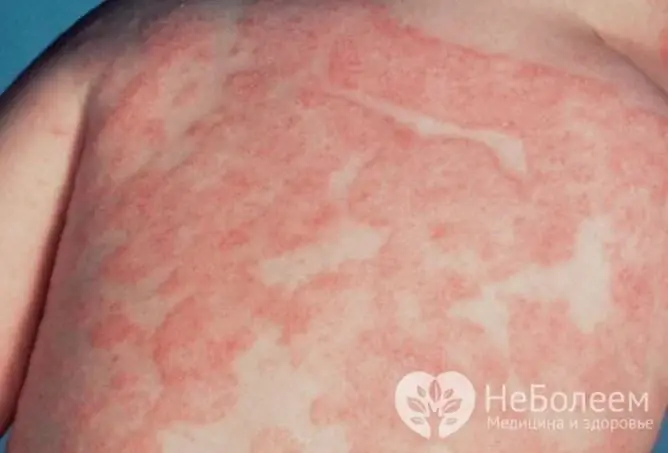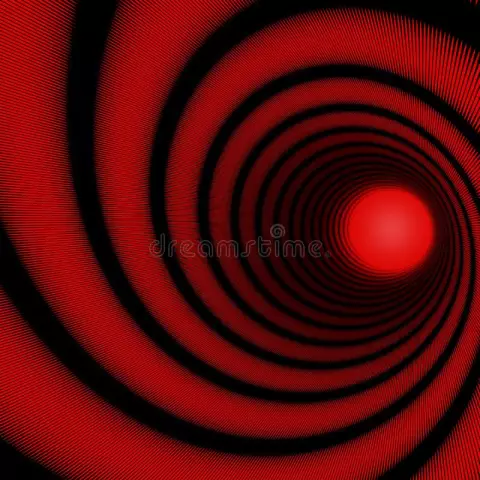- Author Rachel Wainwright [email protected].
- Public 2023-12-15 07:39.
- Last modified 2025-11-02 20:14.
How to put mustard plasters for bronchitis correctly
The content of the article:
- How to properly put mustard plasters for bronchitis
- Contraindications
- Adverse consequences
- Mustard plasters in the treatment of bronchitis
- Video
Mustard plasters for bronchitis are considered an effective treatment, but they are not always shown. For this reason, before using them, you should definitely consult with your doctor. The answer to the question of whether it is possible to put mustard plasters for bronchitis depends on the form of the disease, the presence of certain symptoms and some other factors.
Mustard plasters are used in addition to the main therapy for bronchitis, but they are ineffective as the only treatment. They can be used after the acute symptoms subside, and cough remains the main manifestation of the disease. Usually they are prescribed one day after the normalization of body temperature.

The need to use mustard plasters should be discussed with your doctor.
According to patient reviews, a pronounced effect is usually observed after several procedures.
How to properly put mustard plasters for bronchitis
When preparing for the procedure, you should take mustard plasters, a small container of warm water, a towel and a blanket. The skin in the places where the mustard plasters will be placed must be cleaned and slightly moistened with water. The patient needs to take a lying position. First, mustard plasters are applied to the chest, and then to the back.
It is recommended to put mustard plasters on the chest 5-10 cm below the level of the collarbones, avoiding the heart area. On the back, mustard plasters are placed under the shoulder blades and between them. You can not put mustard plasters on the mammary glands, birthmarks, bone protrusions and in the projection of the kidneys.
The mustard plaster is dipped in a container of water for a few seconds and applied to the skin. The water must be heated to a temperature of 40-45 ° C. When placing mustard plasters, you need to ensure that they do not touch each other. After all the mustard plasters are placed, you need to lightly blot them with a sponge or damp cloth. Then the area of the body, on which the mustard plasters were applied, is covered with a dry towel, the patient is wrapped in a blanket.
In adults, mustard plasters are kept for 10-15 minutes, in children - 5 minutes. The patient may feel a slight burning sensation at the same time, but there should be no pain. If the burning sensation becomes severe, the mustard plasters are removed.
After removing the mustard plasters, you must carefully remove the remnants of mustard from the skin, wipe the skin at the site of the procedure with a damp cloth, wipe it dry. You can not wipe the skin in places where mustard plasters were installed, with alcohol or products that contain it, only with warm water.
After completing the procedure, the patient needs to lie down under the covers for some time.
Mustard plasters are applied once a day, however, when treating children, this should not be done daily. In addition, children are prohibited from putting mustard plasters on their back and chest at the same time.
How many days this needs to be done depends on the effectiveness of the procedure. In the absence of improvement in the patient's condition after the 2-3rd procedure, the use of mustard plasters is stopped, if there is an effect, they continue, but not more than 5 days in a row.
Contraindications
Mustard plasters are not placed at elevated body temperature, during pregnancy and breastfeeding. They are contraindicated in children under three years of age, since their procedure is associated with a high risk of burns or allergies.
In obstructive bronchitis, it is not recommended to put mustard plasters - essential oils released during the procedure can cause the development of an allergic reaction and aggravate the patient's condition.
Mustard plasters are contraindicated in hypertension, bronchial asthma, tuberculosis, malignant neoplasms, internal bleeding, convulsions, bleeding disorders, as well as in psoriasis and other skin diseases, diseases of the spine, after myocardial infarction or stroke.
A slight hyperemia of the skin at the place where the mustard plaster is placed can persist for several days, however, a pronounced purple skin color, as well as the spread of hyperemia or rash to other areas not affected by mustard plaster, indicates the development of an allergic reaction.
Adverse consequences
The adverse consequences of using mustard plasters can be irritation of the skin up to a severe burn, hyperpigmentation of the skin, the development of allergies, both local (severe hyperemia, urticaria) and systemic (Quincke's edema).
What an allergic reaction to mustard may look like can be seen in the photo.

One of the options for an allergic reaction to mustard plasters
If the patient has a strong burning sensation and / or pain, the procedure should be abandoned, removed mustard plasters, removed mustard, rinse the skin with warm water and lubricate with baby cream.
Mustard plasters in the treatment of bronchitis
A mustard plaster is a bag of porous material filled with mustard. In addition to the main active ingredient, essential oils of eucalyptus, fir, and red pepper can be added there, which enhances the therapeutic effect.
The mechanism of action of mustard plasters is based on the irritating effect of mustard seed essential oil. The skin in the place of contact with the mustard plaster heats up, the superficial blood vessels expand, the blood circulation in the subcutaneous tissue increases, the nerve endings are irritated. As a result, tissue nutrition improves, the immune system is stimulated, and metabolism is activated.
Mustard plasters can be placed on the upper chest, between and under the shoulder blades, on the calves and on the feet in the heel area.
Bronchitis is a common disease of the respiratory system that can have an infectious or non-infectious etiology. The pathological process proceeds mainly in the mucous membrane, but it can also affect the deeper layers of the bronchial wall. Mustard plasters for this disease allow you to get rid of stagnation of phlegm, quickly remove it from the body, and also help to activate the immune system.
A substitute for mustard plasters can be a hot foot bath with mustard powder. For her, it is necessary to dilute mustard in water in the ratio of 100 g of mustard powder to 10 liters of water at a temperature of 38-40 ° C. After the completion of the procedure, the patient should be put to bed and covered with a blanket, after a while you can give him hot tea with lemon and honey.
Respiratory gymnastics, physiotherapy exercises, massage are also used as auxiliary methods of treating bronchitis.
Video
We offer for viewing a video on the topic of the article.

Anna Aksenova Medical journalist About the author
Education: 2004-2007 "First Kiev Medical College" specialty "Laboratory Diagnostics".
Found a mistake in the text? Select it and press Ctrl + Enter.






